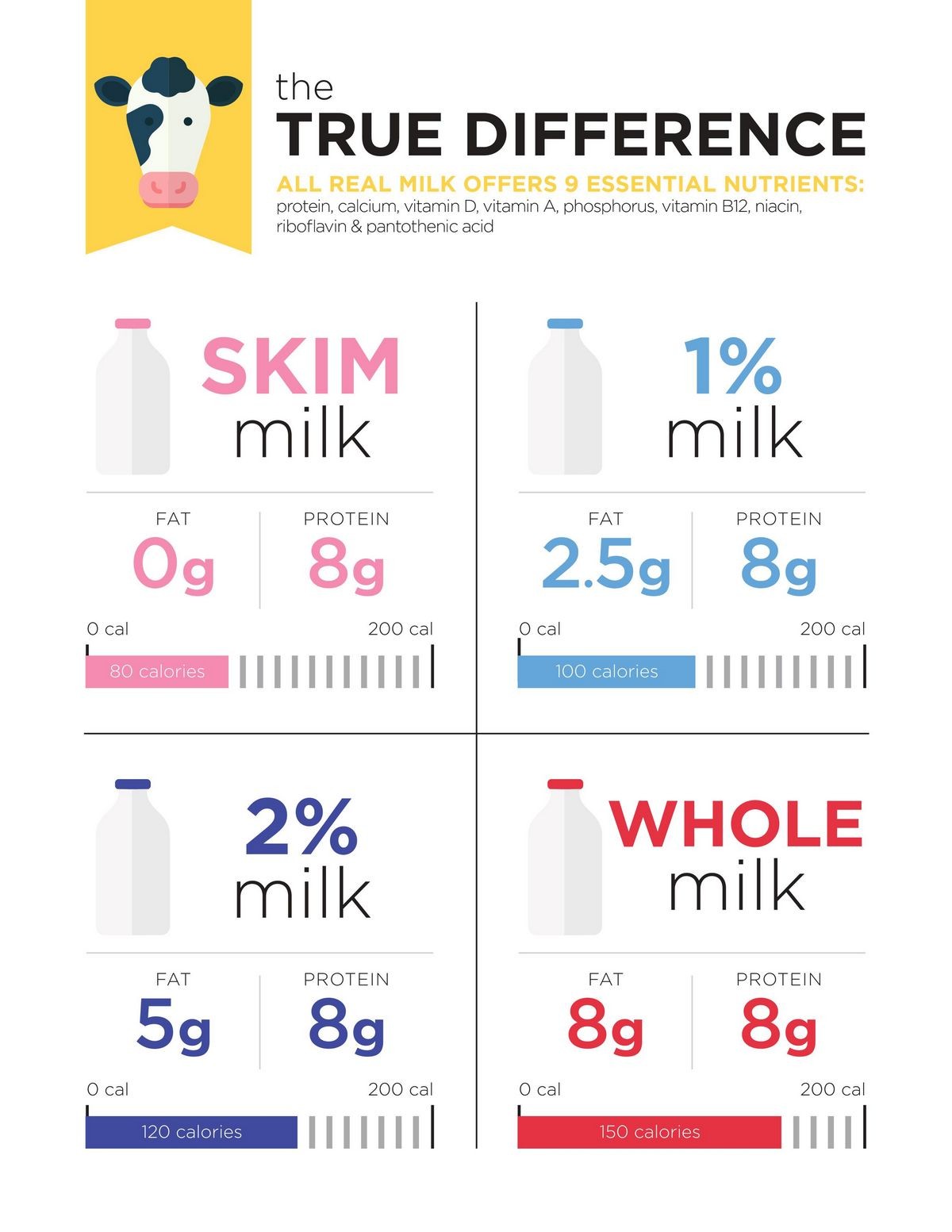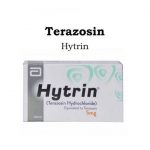
Contents
What Is the Difference Between Whole Milk and Skim Milk? Which Is Healthier?
Skim milk is whole milk with the fat content removed or "skimmed" from the surface. Whole milk contains around 3.5% fat while skim milk retains around 0.1% of its original fat.
Most children in the United States grow up drinking cow’s milk unless they have an allergy or their family follows a plant-based diet. If you were raised after the 1970s, you might have drunk skim milk or low-fat milk due to concerns about dietary fat and heart disease. Before this point in history, most people drank whole milk without concerns about calories, saturated fat, or whether the milk was organic or grass-fed.
The calcium, fat-soluble vitamins, and protein found in milk are essential components of many people’s diets. If you’re a milk-drinker and you’re not sure which type is right for you, consider the following information to make a more informed choice.
Skim milk is whole milk with the fat content removed or “skimmed.” Though labeled "fat-free," it retains around 0.1% of its original fat.
Most of the fat in milk is saturated fat. While some saturated fat is beneficial, in large quantities, it can potentially raise "bad" cholesterol, increase inflammation, and contribute to heart disease.
Experts recommend that people who eat about 2,000 calories daily should limit their saturated fat intake to around 13 grams. Because skim milk has no saturated fat, it provides an attractive option for people concerned about heart health.
What is whole milk?
This milk contains around 3.5% fat. Despite popular perception, most store-bought whole milk doesn’t come out of the cow looking like it does. The milk you’re buying from the store is usually homogenized – the fat or cream is blended with the rest of the milk.
If you’ve seen non-homogenized milk, you’ll notice that the cream stays on the top and is often broken up into chunks. In homogenized milk, you’re drinking the same amount of fat with each sip.
Whether you choose homogenized or non-homogenized whole milk, you’re ingesting 4.54 grams of saturated fat per cup. This saturated fat might benefit your health and your heart, unlike the fat in red meat, which can clog arteries.
What are the benefits and risks of drinking each type of milk?
Many people dislike skim milk due to its thin consistency and water texture. Others dislike whole milk because it’s too thick. Each type of milk comes with a unique nutritional profile. Skim milk might be more suitable for some, while whole milk is better for others. Learn more about the benefits and drawbacks of drinking each type of milk if you’re having trouble deciding which type to buy.
Whole milk
Whole milk has a richer taste, and if you’re a milk lover, switching out this milk for one with a lower fat percentage might be challenging. It offers the following benefits:
- It might contain healthier saturated fats that are slightly different than those in meats.
- It may improve high-density lipoprotein (HDL) or “good” cholesterol without affecting low-density lipoproteins (LDL) or “bad” cholesterol and blood glucose.
- It aids in the absorption of fat-soluble vitamins like Vitamins A, D, and K.
- It helps regulate blood sugar and curb hunger due to its filling fat content.
- Organic, grass-fed whole milk contains more omega-3 fatty acids than non-organic or skim.
While there are many benefits to whole milk that most people aren’t aware of, there are times when whole milk isn’t appropriate. You should check with your doctor before switching to whole milk if you have heart disease or have been told in the past to reduce your dietary fat intake.
Skim milk
Skim milk isn’t as flavorful, but some prefer its texture compared to thicker whole milk. Skim milk provides these health benefits:
- It contains a minimal amount of fat and may be suitable for those concerned about heart disease or high cholesterol.
- It might be easier to blend into smoothies and recipes due to its thinner consistency.
- It offers 8.44 grams of protein per cup.
The downside of skim milk is that if you’re not eating enough healthy fats, you might have trouble absorbing fat-soluble vitamins found in the milk. You might also feel hungrier sooner as the fat in milk can help you feel full.
QUESTION
What if I don’t like milk or I can’t drink it?
Deciding which type of milk to buy isn’t just about health. It’s also about taste and texture. If you enjoy whole milk but want to avoid extra calories and saturated fat, try drinking 2% instead. If you dislike the watery consistency of skim milk or have concerns about absorbing fat-soluble vitamins, try 1%.
Many people can’t drink milk at all due to ethical or health reasons and struggle to find a suitable alternative. Plant-based milk alternatives are not all the same. For example, unsweetened soy milk is most similar in composition to skim milk because it contains a good amount of protein. Pea milk and flaxseed milk have similarly high levels of protein.
Other plant-based beverages, such as almond and rice milk, may not provide adequate nutrition compared to cow’s milk. It’s important to consult your doctor or meet with a nutritionist if you have concerns about switching to a plant-based diet, giving up milk, or taking your allergic child off milk to ensure that nutritional needs are met.
Is one type of milk best?
Experts are divided when choosing milk from either side of the saturated fat continuum. If you wish to cut calories, you might be tempted to switch to skim milk, but you could end up feeling hungrier and eating less healthy foods. If you choose whole milk, you might have concerns over your cholesterol or the additional calories.
For now, it’s probably safe to say that there is no clear “winner” regarding skim and whole milk: Both types provide clear, evidence-based benefits for the human body. The answer to this question likely comes down to individual preference and health.
Talk to your doctor about whether switching to a different kind of milk would be better for your diet, heart, or overall health if you have a preexisting condition such as high cholesterol, obesity, or heart disease.
American Heart Association: "Saturated Fat."
The American Journal of Clinical Nutrition: "Whole milk compared with reduced-fat milk and childhood overweight: a systematic review and meta-analysis."
American Society for Nutrition: "Going nuts about milk? Here’s what you need to know about plant-based milk alternatives."
Cleveland Clinic: "Whole Milk or Skim? The Jury’s Still Out."
The Clinical Biochemist Reviews: "Fat-Soluble Vitamins: Clinical Indications and Current Challenges for Chromatographic Measurement."
European Journal of Clinical Nutrition: "Effect of whole milk compared with skimmed milk on fasting blood lipids in healthy adults: a 3-week randomized crossover study."
International Dairy Journal: "Nutrient density and nutritional value of milk and plant-based milk alternatives."
National Institute of Food and Agriculture: "What is the difference between whole milk and homogenized milk, if there is one?"
U.S. Department of Agriculture: "Milk, nonfat, fluid, with added vitamin A and vitamin D (fat free or skim)," "Milk, whole, 3.25 milkfat, with added vitamin D," "Soy milk, unsweetened, plain, refrigerated."


